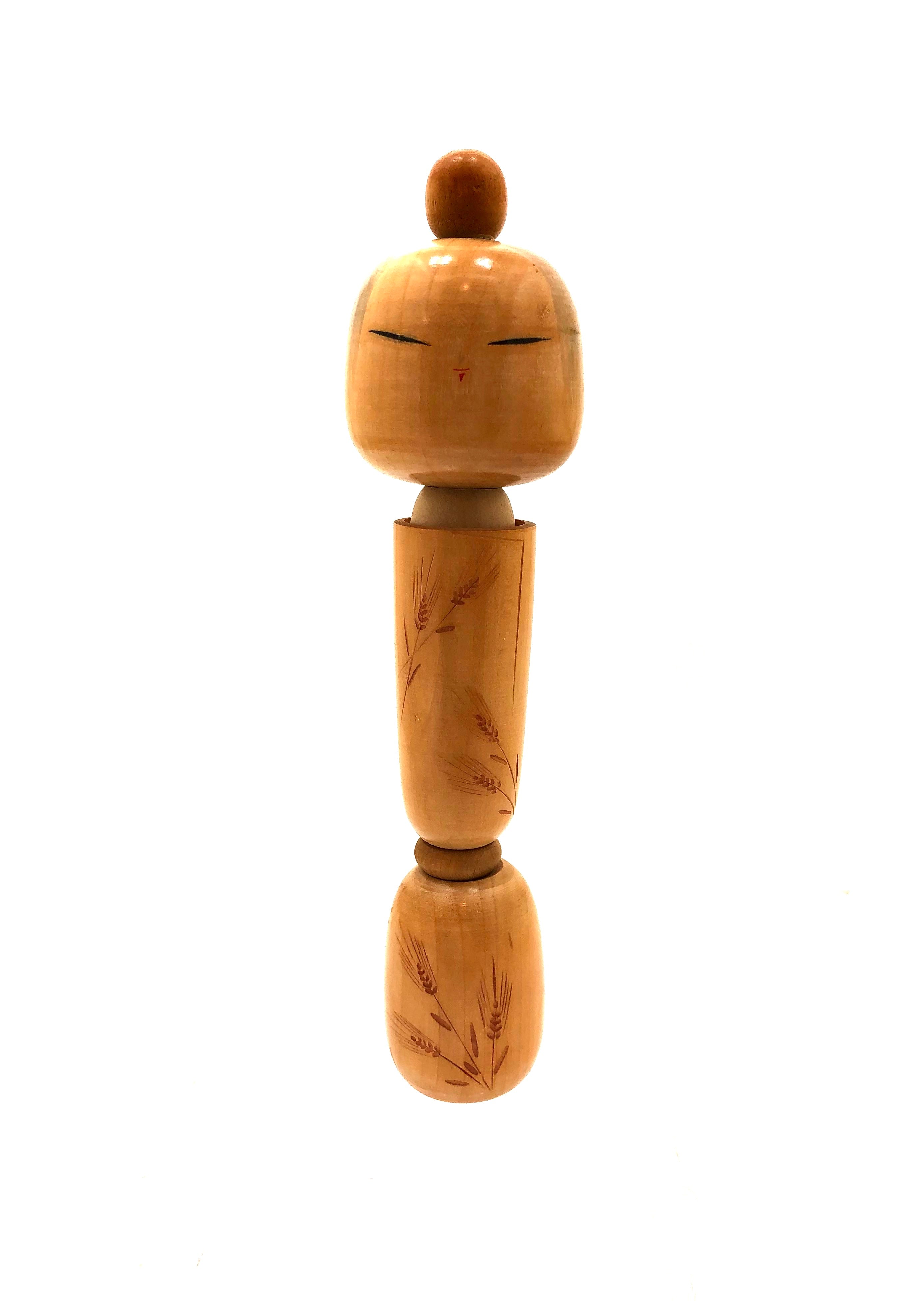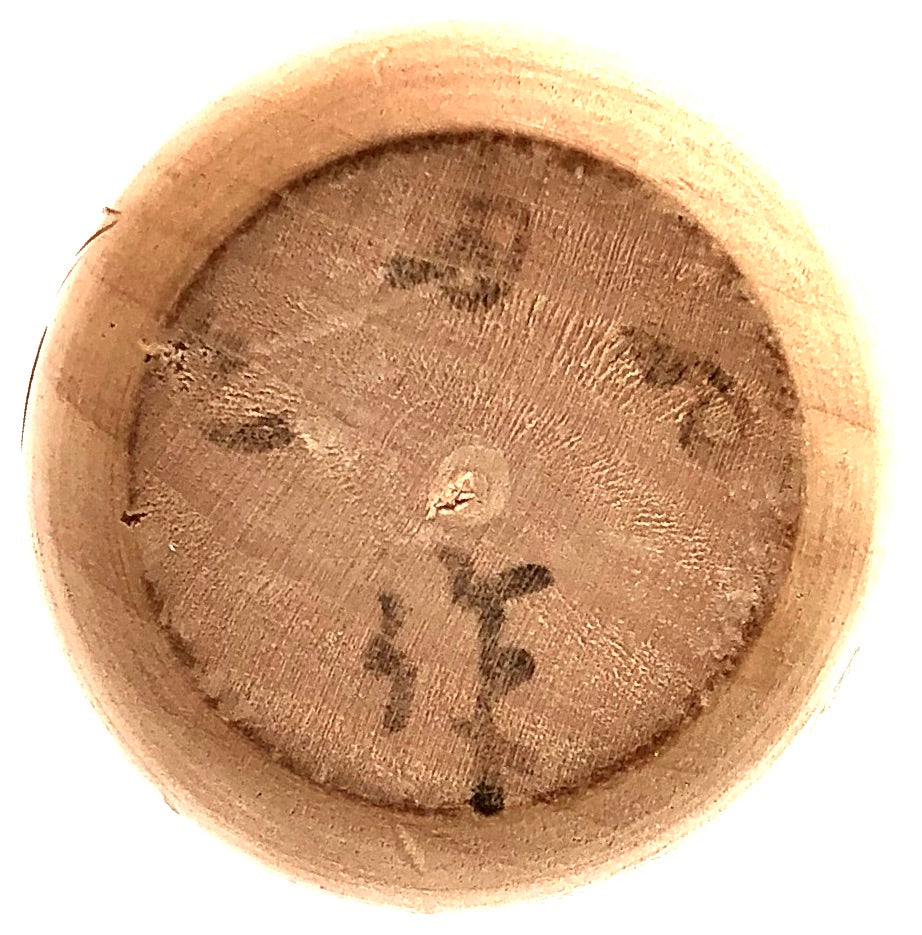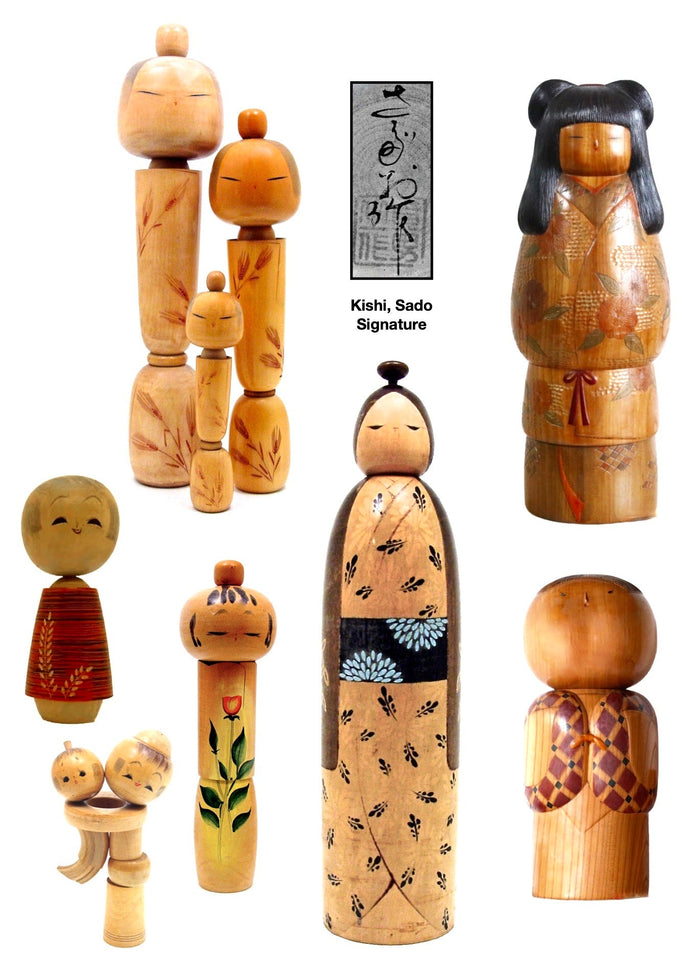

Vintage Sosaku Kokeshi by Kishi, Sadao Entitled: “Seishin Komugi no | Spirit of Wheat”
Dimensions: 9-0”h
This delicate small and well proportioned Kokeshi was made in celebration of the Wheat Festival in Korobe Gorge in Japan. Wheat when harvested is golden brown as is the doll left to express the natural wood and finished with uncolored candle wax, (Rōsoku no rō). The central motif on the body is three beautifully carved and rendered stalks of wheat which are also left golden brown as seen in the fields of Japan. Her head is raised from the body so that the Kimono is more pronounced. She has a top knot with suggested hair painted in gray with expressive eyes and a small red mouth. The only other demarkation is the small obi positioned to exemplify the simple garment. The doll is signed on the back by Kishi, Sadao. The piece was published in Sosaku Kokeshi: A New Look At An Old Tradition in 2015.
Vintage Condition: Excellent and commensurate with age with no scratches, flaws, or discoloration. The photo supports the description.
NOTE: Born in Maebashi, Gunma Prefecture, Kishi-san, (1932-11998) produced hundreds of Creative Kokeshi dolls until his passing. During his career, he received numerous awards, winning the Prime Minister’s Award and the Minister of Economy, Trade, and Industry Award (Meti), considered the most prestigious of all Kokeshi competition Trophies. He is credited with being one of the major influences of the Sosaku Kokeshi movement gaining recognition for the dolls as a popular and valid art form.

Artisan
Woodworker: Kishi, Sadao
1932-1998
Biographical History:
Kishi-san was born in Maebashi, Gunma Prefecture in 1932 and produced an array of creative Kokeshi dolls until his passing in 1998. In 1950 he started creating Sosaku Kokeshi. During his career, he received numerous awards, winning the Prime Minister’s Award and the Minister of Economy, Trade and Industry Award (METI). He is credited with being one of the major influences of the ‘Sosaku Kokeshi Movement’, gaining recognition for the dolls as a popular and valid art form. In 1969 his Kokeshi entitled: “Spirit of Wheat” was purchased by the Crown Prince and Crown Princess. In 1970, he dedicated his work to the Enshrining Festival of the Meiji Shrine, representing his Kokeshi focused on the Korobe Gorge golden brown Wheat which was not only a central theme and the main agricultural enterprise in his native prefecture.
Collector's note – descriptive qualities, standard characteristics & ornamentation styles:
Many of his dolls illustrate both a burning technique as well as painting images which he initiated called, “Shou sugiban”, which creates three-dimensional qualities enhancing the garments on his Kokeshi and ‘Michiyuki’ (traveling coat) or Kimono. Many of his dolls have a three-dimensional ring of different wood to bring attention to his unique approach to the Obi. Other Obi were pronounced and showed flowers such as the chrysanthemum flower. Additionally, he incorporated simple flowers and subjects related to mothers and children as both form-giving and decoration on the bodies. The faces on his dolls are extremely simple incorporating angled eyes and a suggestion of a nose and lips. Many of his dolls featured a ‘Mage’, in which the hair is stacked, in a complex manner, with some incorporated decorative ‘Kanzashi’ (hairpins). He used a variety of woods including Castoaralia wood, and finished with a type of candle called, “Rōsoku no rō” All of his creations are beautifully proportioned and show a direct connection to everyday life. Several Kokeshi won the Prime Minister's Prize in 1983 and was featured in the Creative KOKESHI Artistic Handicraft Directory.
Explore & Learn More about Woodworker: Kishi, Sadao